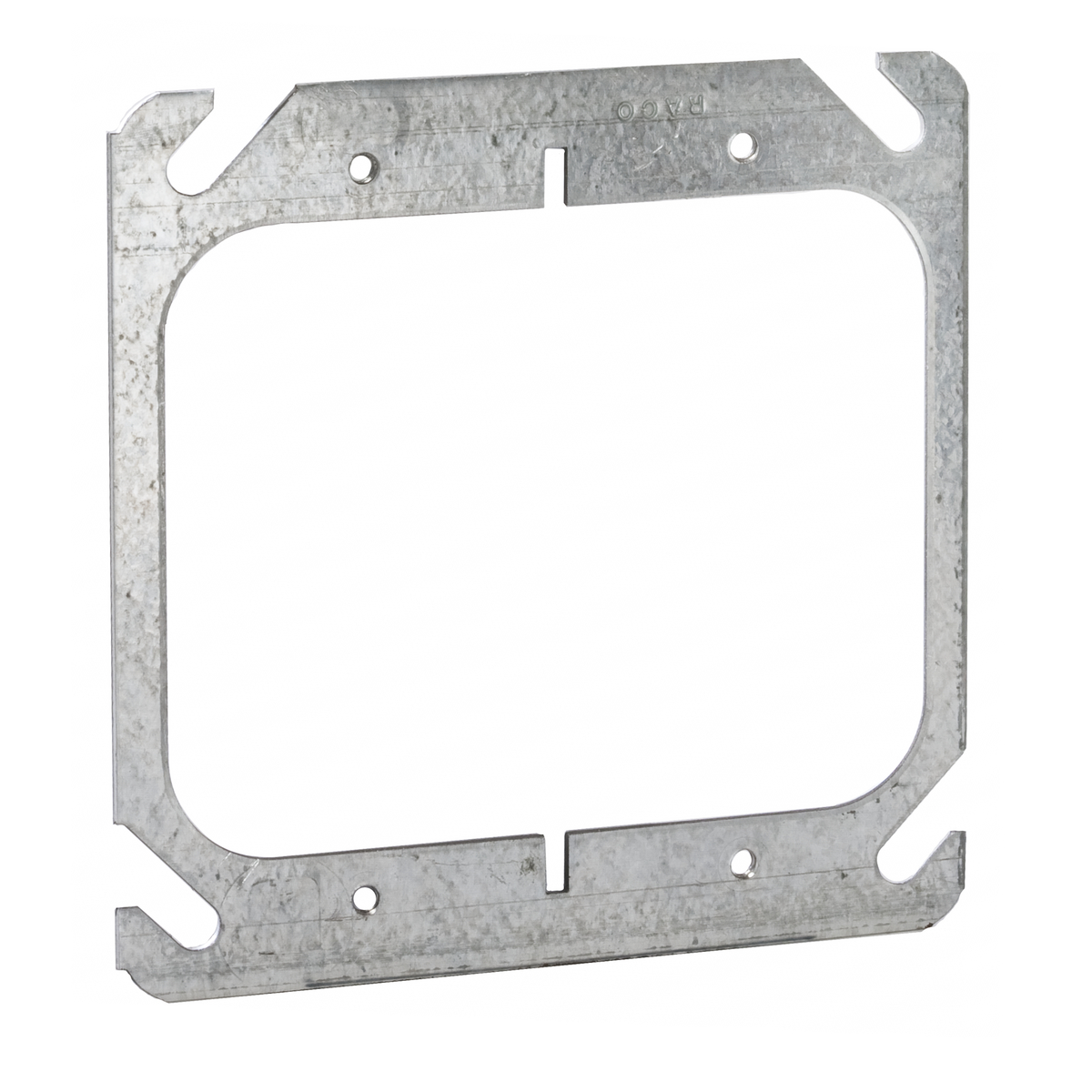

I'd appreciate if some of you experts would tell me where my understandings stated above are wrong. My understanding is that Type Two is used for exposed wiring (no dry wall or surface covering of any type) and I suspect this type of cover should also be used with a handy box which has rounded corners so that it won't "catch stuff" like an exposed square-cornered metal box can.

The raised portion of the mud ring will sit in a hole cut into the drywall so that this portion of the mud ring is flush with the outer surface of the drywall.

The drywall will cover the flat perimeter portion of the mud ring. My understanding, which may well be completely wrong, is that Type One is called a mud ring or plaster ring that is installed on top of the box prior to drywall being installed. Type Two is entirely raised, typically 1/2", even along the outer perimeter where it is sitting on the outer edges of the box. Type One has a flat perimeter, which touches the edges of the box, and the inner portion of the cover is raised either 1/2" or 5/8" depending on the cover design. There appears to be two types of metal covers for the metal electrical boxes. The paneling will be screwed to the studs so that it is relatively easy to remove in case I want to modify the wiring in the future. The walls will be insulated with fiberglass batt, then covered with 3/16" thick plywood sheets as paneling. The workshop is wood-framed 2 x 4" construction. I will be using 4 x 4" metal boxes to each hold a single 240 volt receptacle in my workshop. I'm a bit confused about mud or plaster rings for electrical boxes and know some of you guys can provide the needed guidance.


 0 kommentar(er)
0 kommentar(er)
